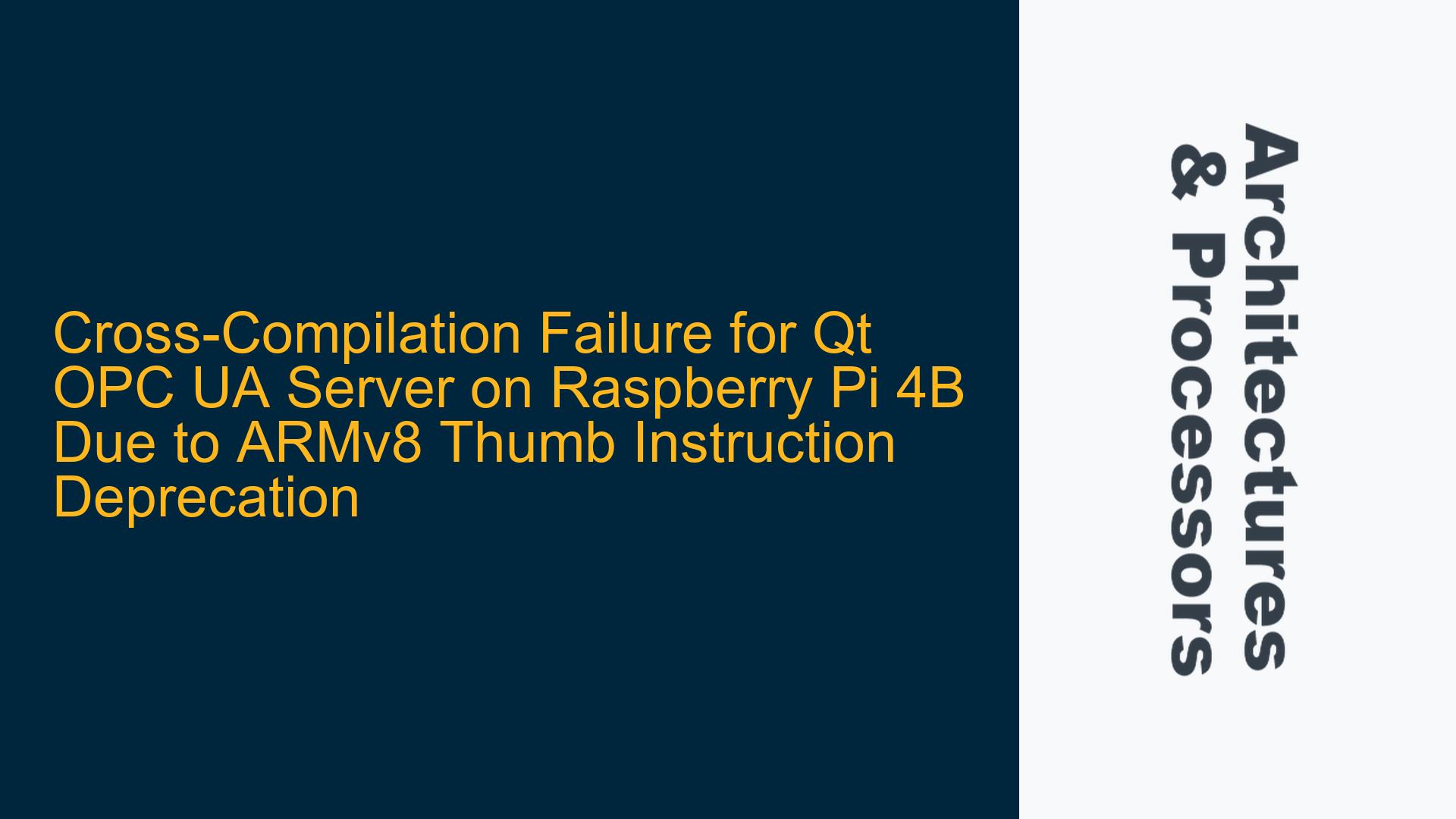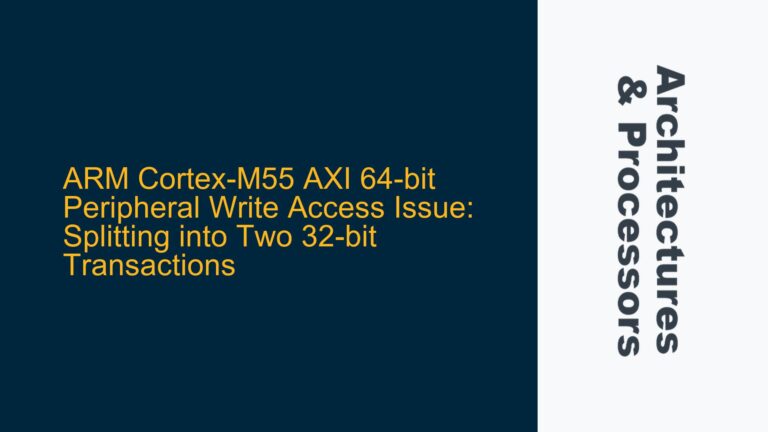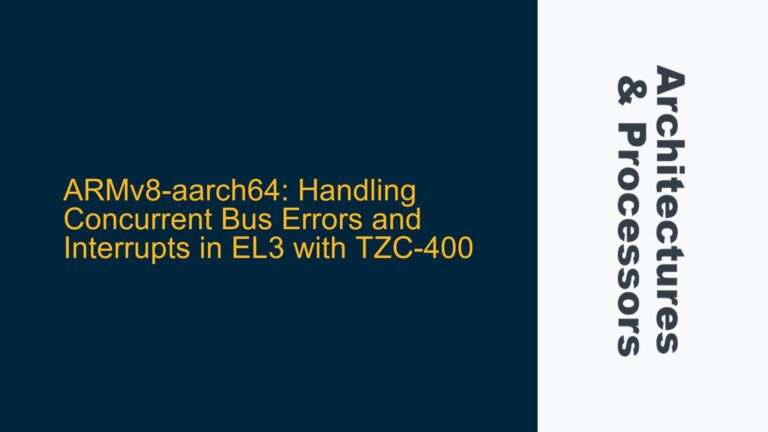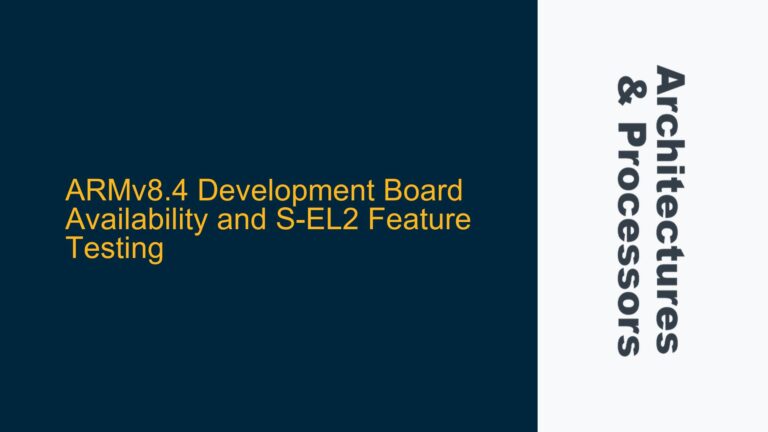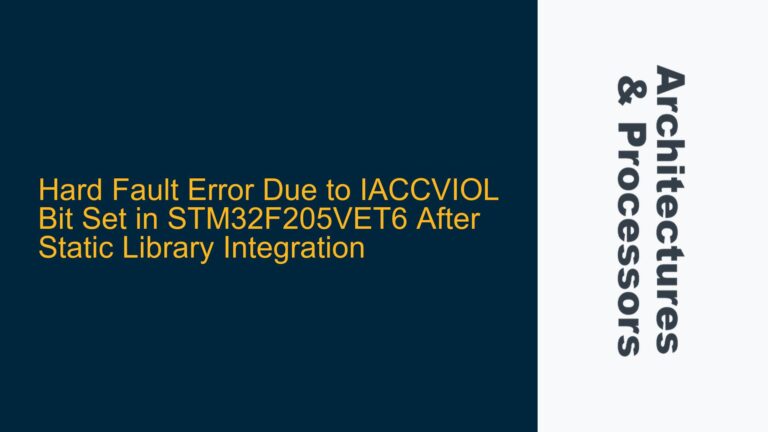ARMv8 Thumb Instruction Deprecation in IT Blocks During Cross-Compilation
The core issue revolves around the failure to cross-compile a Qt OPC UA Server project for a Raspberry Pi 4B using Qt Creator 5.15.2. The Raspberry Pi 4B employs an ARM Cortex-A72 processor, which is based on the ARMv8-A architecture. During the compilation process, the assembler generates errors related to deprecated 32-bit Thumb instructions within IT blocks. These errors manifest in the form of assembler messages, specifically indicating that IT blocks containing 32-bit Thumb instructions are deprecated in ARMv8. The errors are accompanied by runtime issues, including a failure to initialize the server and a "double free or corruption (fasttop)" error, which suggests memory management problems.
The cross-compilation toolchain in use is GCC Linaro 7.5.0, which includes the C++ compiler gcc-linaro-7.5.0-2019.12-x86_64_arm-linux-gnueabihf-g++ and the C compiler gcc-linaro-7.5.0-2019.12-x86_64_arm-linux-gnueabihf-gcc. The errors occur during the assembly phase of the compilation process, where the intermediate assembly file /tmp/ccF0J1PW.s contains deprecated IT blocks. These IT blocks are used in ARM architectures to handle conditional execution of instructions, but ARMv8-A imposes stricter rules on their usage, particularly in Thumb mode.
The deprecation of 32-bit Thumb instructions in IT blocks is a deliberate architectural change in ARMv8-A, aimed at simplifying the instruction set and improving performance. However, this change can cause compatibility issues with older codebases or toolchains that generate such instructions. The errors observed in the assembler messages are a direct consequence of this architectural shift, and they prevent the successful compilation and deployment of the Qt OPC UA Server on the Raspberry Pi 4B.
Compiler Flag Misconfiguration and ARMv8-A Thumb Mode Restrictions
The root cause of the issue lies in the interaction between the GCC compiler flags and the ARMv8-A architecture’s restrictions on Thumb mode instructions. By default, GCC 7.5.0 enforces the -mrestrict-it flag when targeting ARMv8-A, which restricts the generation of IT blocks to conform to ARMv8-A rules. Specifically, IT blocks in ARMv8-A Thumb mode can only contain a single 16-bit instruction from a select set of instructions. This restriction is intended to align with the architectural goals of ARMv8-A, but it can lead to errors when compiling code that was originally written for older ARM architectures or when using older toolchains.
The -mrestrict-it flag is not the only factor contributing to the issue. The presence of the -Werror flag in the compiler options exacerbates the problem by treating all warnings as errors. In this case, the assembler warnings about deprecated IT blocks are elevated to errors, causing the compilation process to fail. Additionally, the runtime error "double free or corruption (fasttop)" suggests that the memory management in the application is being affected by the compilation issues, potentially due to misaligned or improperly generated instructions.
Another contributing factor is the use of an older version of the GCC toolchain (7.5.0). While this version is capable of targeting ARMv8-A, it may not fully account for all the architectural nuances of ARMv8-A, particularly when dealing with legacy code or complex projects like the Qt OPC UA Server. The combination of these factors creates a perfect storm of compatibility issues, leading to the observed compilation and runtime errors.
Resolving Deprecated IT Blocks and Ensuring ARMv8-A Compliance
To address the issue, a multi-step approach is required, focusing on modifying compiler flags, updating the toolchain, and ensuring compliance with ARMv8-A architectural requirements.
Step 1: Modify Compiler Flags
The first step is to adjust the compiler flags to prevent the assembler errors from halting the compilation process. This involves removing the -Werror flag, which treats warnings as errors, and ensuring that the -mrestrict-it flag is either removed or appropriately configured. The -mrestrict-it flag can be explicitly disabled by adding -mno-restrict-it to the compiler options. This allows the generation of IT blocks without strict ARMv8-A compliance, which may be necessary for legacy code.
Step 2: Update the Toolchain
Using an older version of the GCC toolchain can lead to compatibility issues with newer architectures like ARMv8-A. Upgrading to a more recent version of the GCC toolchain, such as GCC 9.x or 10.x, can help resolve these issues. Newer versions of GCC include improved support for ARMv8-A and better handling of Thumb mode instructions. Additionally, newer toolchains may include optimizations and bug fixes that address issues specific to cross-compilation for ARMv8-A.
Step 3: Review and Modify Assembly Code
If modifying compiler flags and updating the toolchain do not resolve the issue, it may be necessary to manually review and modify the assembly code generated during the compilation process. This involves examining the intermediate assembly file /tmp/ccF0J1PW.s and identifying the deprecated IT blocks. These blocks can be replaced with ARMv8-A compliant instructions or refactored to avoid the use of deprecated features. While this approach is more labor-intensive, it ensures full compliance with ARMv8-A architectural requirements.
Step 4: Validate Memory Management
The runtime error "double free or corruption (fasttop)" indicates potential issues with memory management. This could be a side effect of the compilation issues or an independent problem in the application code. To address this, it is essential to validate the memory management logic in the Qt OPC UA Server project. This includes checking for double-free errors, buffer overflows, and other common memory-related issues. Tools like Valgrind can be used to analyze the application’s memory usage and identify potential problems.
Step 5: Test and Deploy
After implementing the above steps, the application should be recompiled and tested on the Raspberry Pi 4B. This includes verifying that the server initializes correctly and that there are no runtime errors. If the application behaves as expected, it can be deployed to the target environment. If issues persist, further debugging and analysis may be required, potentially involving more detailed examination of the generated assembly code and the application’s interaction with the ARMv8-A architecture.
By following these steps, the cross-compilation issues related to deprecated IT blocks in ARMv8-A can be resolved, enabling the successful deployment of the Qt OPC UA Server on the Raspberry Pi 4B. This approach not only addresses the immediate problem but also ensures that the application is optimized for the ARMv8-A architecture, improving performance and reliability.
